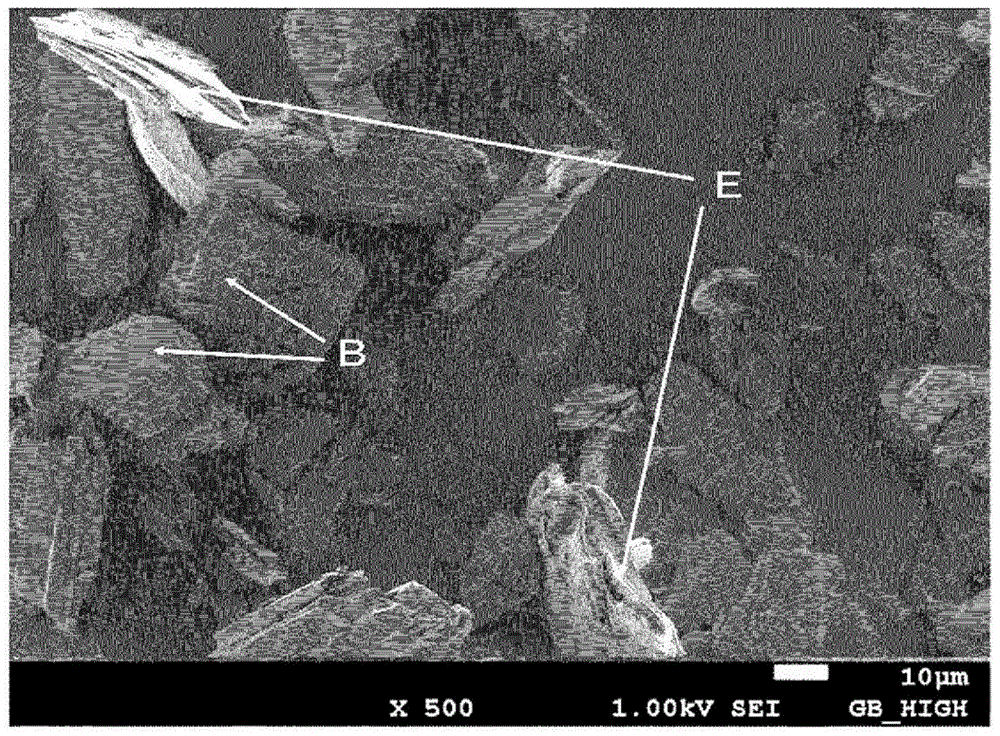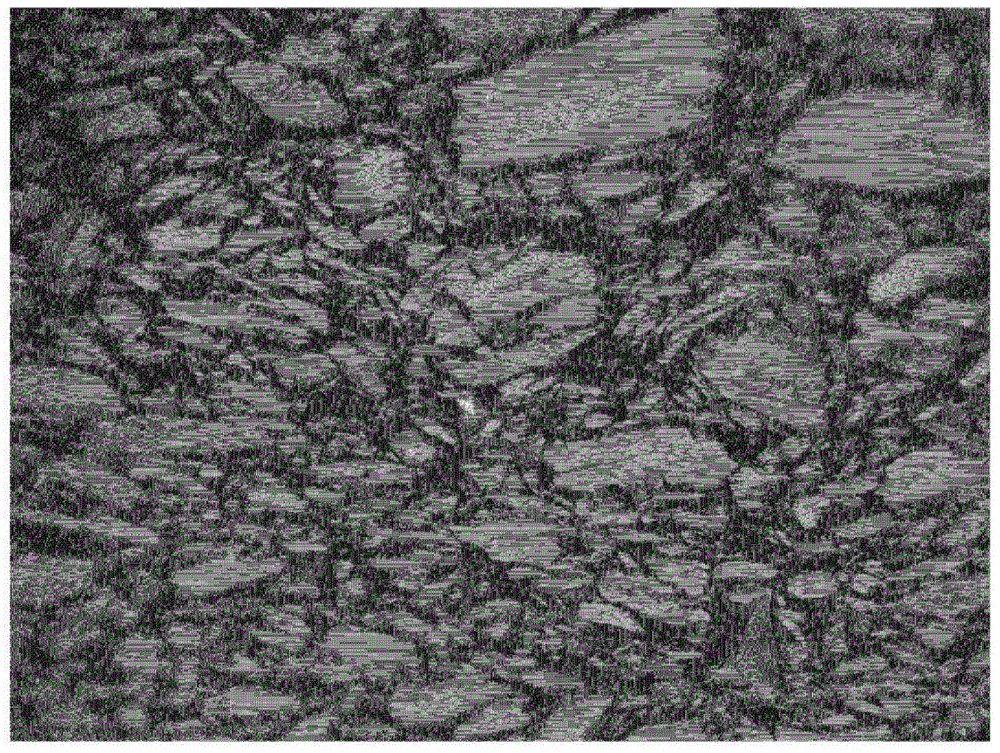Carbon material, carbonaceous material for battery electrode, and battery
A technology of battery electrodes and carbon materials, applied in battery electrodes, secondary batteries, circuits, etc., can solve the problems of natural graphite deformation, reduced electrode performance, poor cycle characteristics, etc., and achieves high reversibility, excellent productivity, high Effects of Coulombic Efficiency
- Summary
- Abstract
- Description
- Claims
- Application Information
AI Technical Summary
Problems solved by technology
Method used
Image
Examples
Embodiment 1
[0207] Atmospheric pressure distillation of crude oil produced in Liaoning Province, China (API28, wax content 17%, sulfur content 0.66%), relative to the heavy fraction, using a sufficient amount of Y-type zeolite catalyst, and performing fluidized bed distillation at 510°C and normal pressure catalytic cracking. Solid content such as a catalyst was centrifuged until the obtained oil became clear, and decanted oil 1 was obtained. This oil was put into a small delayed coking process. Maintain the drum inlet temperature at 505°C and the drum internal pressure at 600kPa (6kgf / cm 2 ) for 10 hours, and then water-cooled to obtain a black block. Crush the obtained black lump with a hammer to a maximum of about 5 cm, and then use a rotary kiln (electrically heated external heating type, alumina SSA-Sφ120mm inner tube) with the outer wall temperature set at the center of the inner tube at 1450°C, Heating was performed by adjusting the feeding amount and inclination angle of the bl...
Embodiment 2
[0216] Coal tar derived from bituminous coal is subjected to atmospheric distillation at 320°C to remove fractions below the distillation temperature. The obtained tar with a softening point of 30° C. was filtered at 100° C. to remove insoluble matter, and a viscous liquid 1 was obtained. Throw it into a small delayed coking process. Maintain the drum inlet temperature at 510°C and the drum internal pressure at 500kPa (5kgf / cm 2 ) for 10 hours, and then water-cooled to obtain a black block. Crush the obtained black lump with a hammer to a maximum of about 5 cm or less, and then use a rotary kiln (electrically heated external heating type, alumina SSA-Sφ120mm inner tube) with the outer wall temperature at the center of the inner tube set at 1450°C , adjust the feeding amount and inclination angle of the black block in a manner that the residence time is 15 minutes, and heat it.
[0217] The obtained red-hot sample was cooled in the SUS container by the same method as in Exam...
Embodiment 3
[0224] Atmospheric distillation of crude oil produced in Iran (API30, 2% wax content, 0.7% sulfur content), relative to the heavy fraction, using a sufficient amount of Y-type zeolite catalyst, and performing fluidized catalytic cracking at 500 ° C and normal pressure . Solid content such as a catalyst was centrifuged until the obtained oil became clear, and decanted oil 2 was obtained. This oil was put into a small delayed coking process. Maintain the drum inlet temperature at 550°C and the drum internal pressure at 600kPa (6kgf / cm 2 ) for 10 hours, and then water-cooled to obtain a black block. Crush the obtained black lump with a hammer to a maximum of about 5 cm or less, and then use a rotary kiln (electrically heated external heating type, alumina SSA-Sφ120mm inner tube) with the outer wall temperature at the center of the inner tube set at 1450°C , adjust the feeding amount and inclination angle of the black block in a manner that the residence time is 15 minutes, and...
PUM
| Property | Measurement | Unit |
|---|---|---|
| particle size | aaaaa | aaaaa |
| specific surface area | aaaaa | aaaaa |
| particle size | aaaaa | aaaaa |
Abstract
Description
Claims
Application Information
 Login to View More
Login to View More - R&D
- Intellectual Property
- Life Sciences
- Materials
- Tech Scout
- Unparalleled Data Quality
- Higher Quality Content
- 60% Fewer Hallucinations
Browse by: Latest US Patents, China's latest patents, Technical Efficacy Thesaurus, Application Domain, Technology Topic, Popular Technical Reports.
© 2025 PatSnap. All rights reserved.Legal|Privacy policy|Modern Slavery Act Transparency Statement|Sitemap|About US| Contact US: help@patsnap.com



